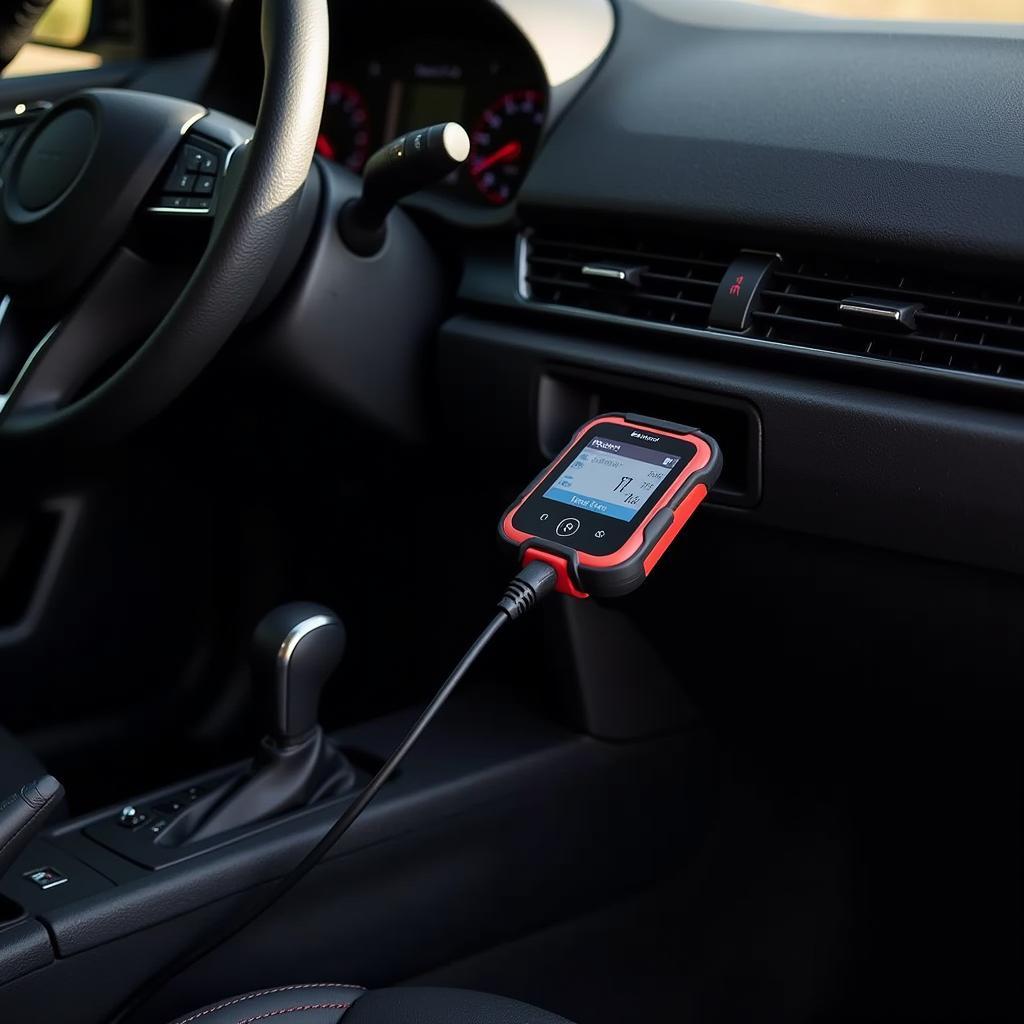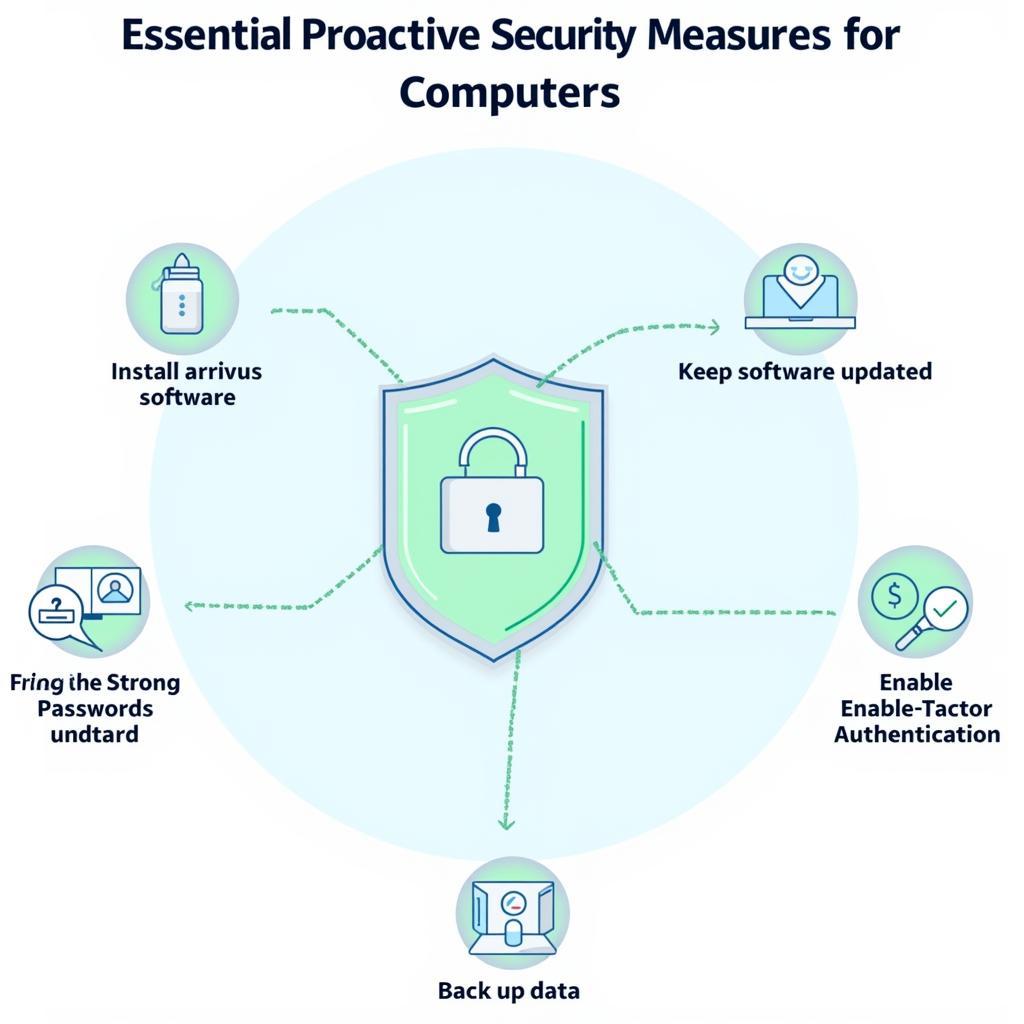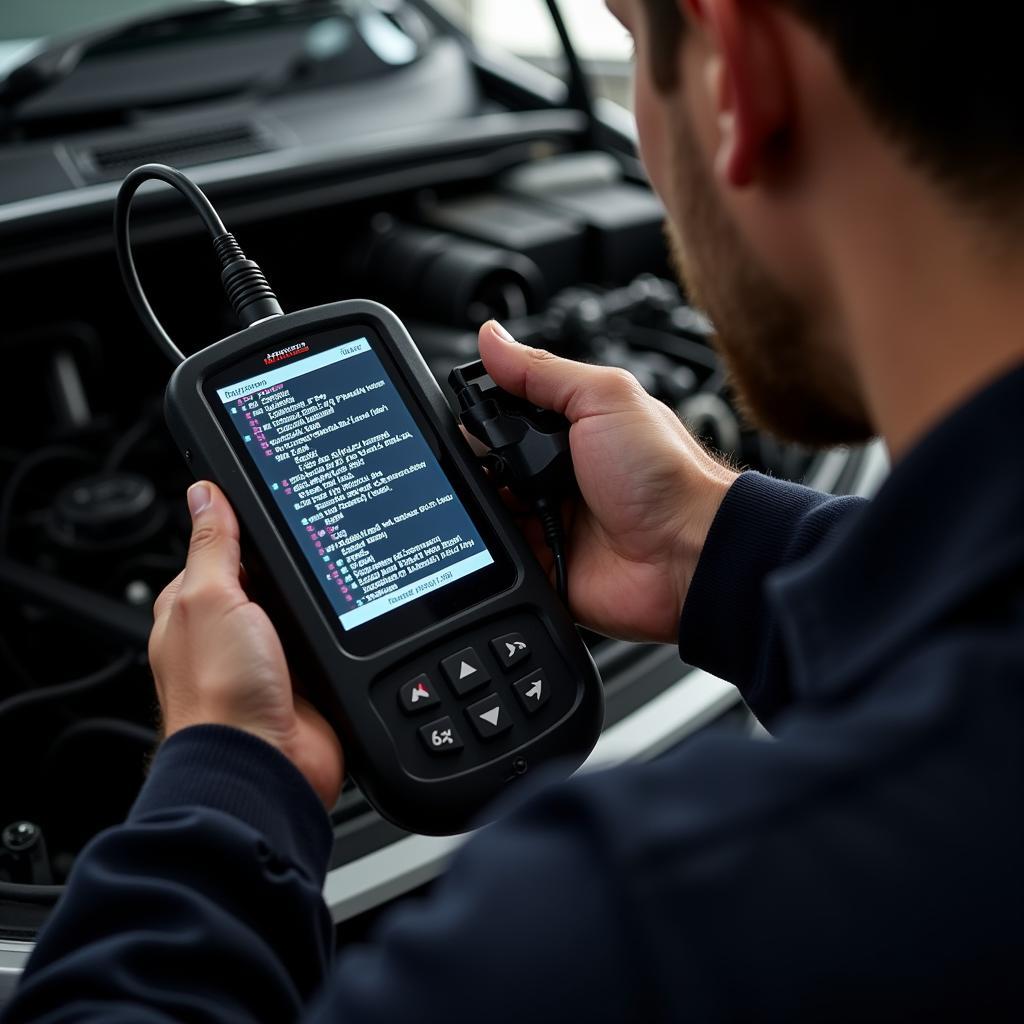In the fast-paced world of automotive technology, staying ahead of the curve is crucial for both car owners and professionals alike. A Car Fault Diagnosis Scanner has transitioned from a luxury tool used solely by mechanics to an essential device for anyone looking to understand and address their vehicle’s health. But with so many options and functionalities, navigating the world of car fault diagnosis scanners can seem daunting. This comprehensive guide is designed to demystify these powerful tools and empower you to take control of your car maintenance journey.
Why You Need a Car Fault Diagnosis Scanner
Gone are the days of relying solely on a mechanic’s intuition to diagnose car troubles. Modern vehicles are complex machines, relying heavily on intricate electronic systems. A car fault diagnosis scanner acts as a window into your car’s computer, translating cryptic error codes into understandable language.
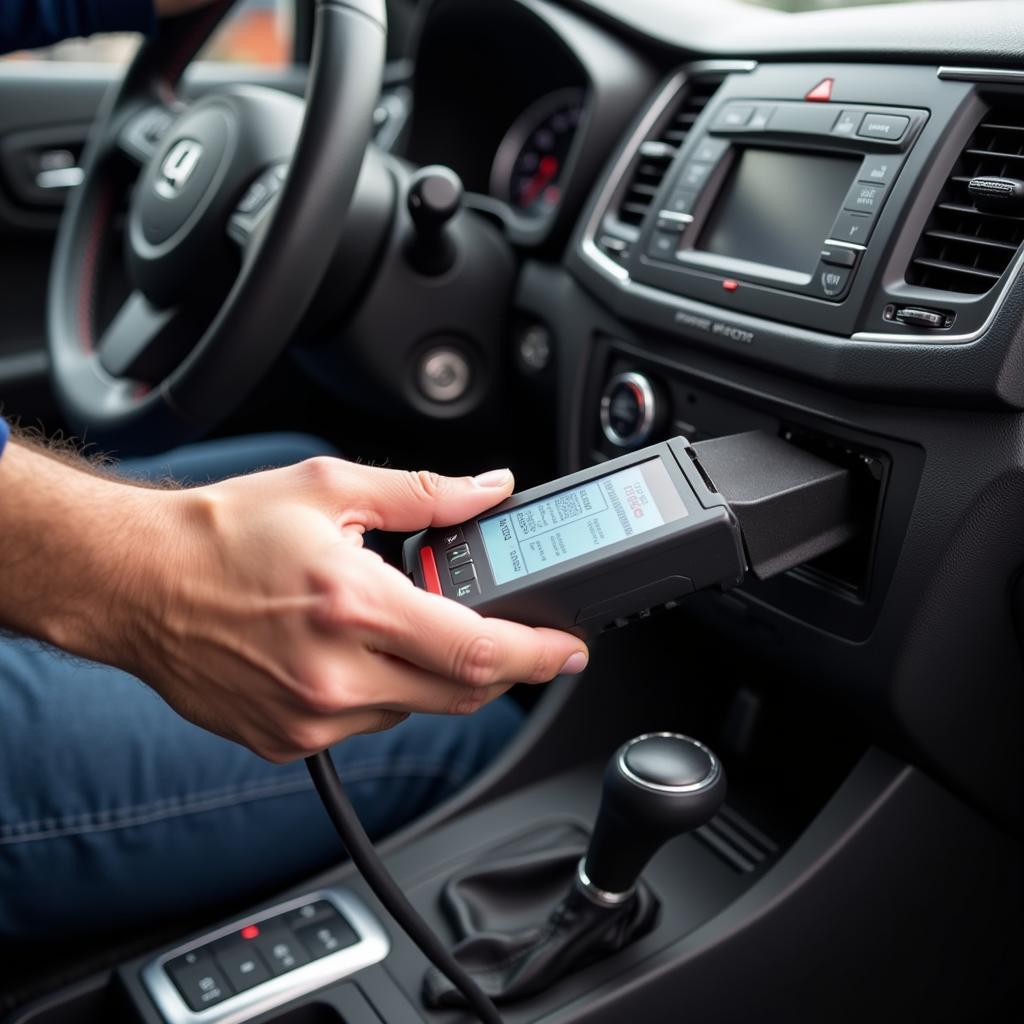 Mechanic using a car fault diagnosis scanner
Mechanic using a car fault diagnosis scanner
But the benefits extend beyond simply reading codes. A quality car fault diagnosis scanner can:
- Pinpoint the Root Cause: Go beyond generic warning lights and pinpoint the exact sensor, component, or system triggering the issue.
- Save Time and Money: Avoid costly and time-consuming trips to the mechanic for simple diagnoses.
- Prevent Future Problems: Identify minor issues before they escalate into major (and expensive) repairs.
- Improve Fuel Efficiency: Diagnose and resolve issues that might be impacting your car’s fuel economy.
- Boost Resale Value: Demonstrate a well-maintained vehicle history to potential buyers.
Types of Car Fault Diagnosis Scanners
Navigating the market of car fault diagnosis scanners can be overwhelming. Let’s break down the primary types:
1. Basic Code Readers:
These entry-level scanners are perfect for beginners and car enthusiasts. They can read and clear basic engine-related fault codes (often referred to as car scanner code list).
2. OBD-II Scanners:
Short for On-Board Diagnostics, these scanners are compatible with all cars manufactured after 1996. They offer a broader range of features, including reading live data streams from various sensors and accessing manufacturer-specific codes.
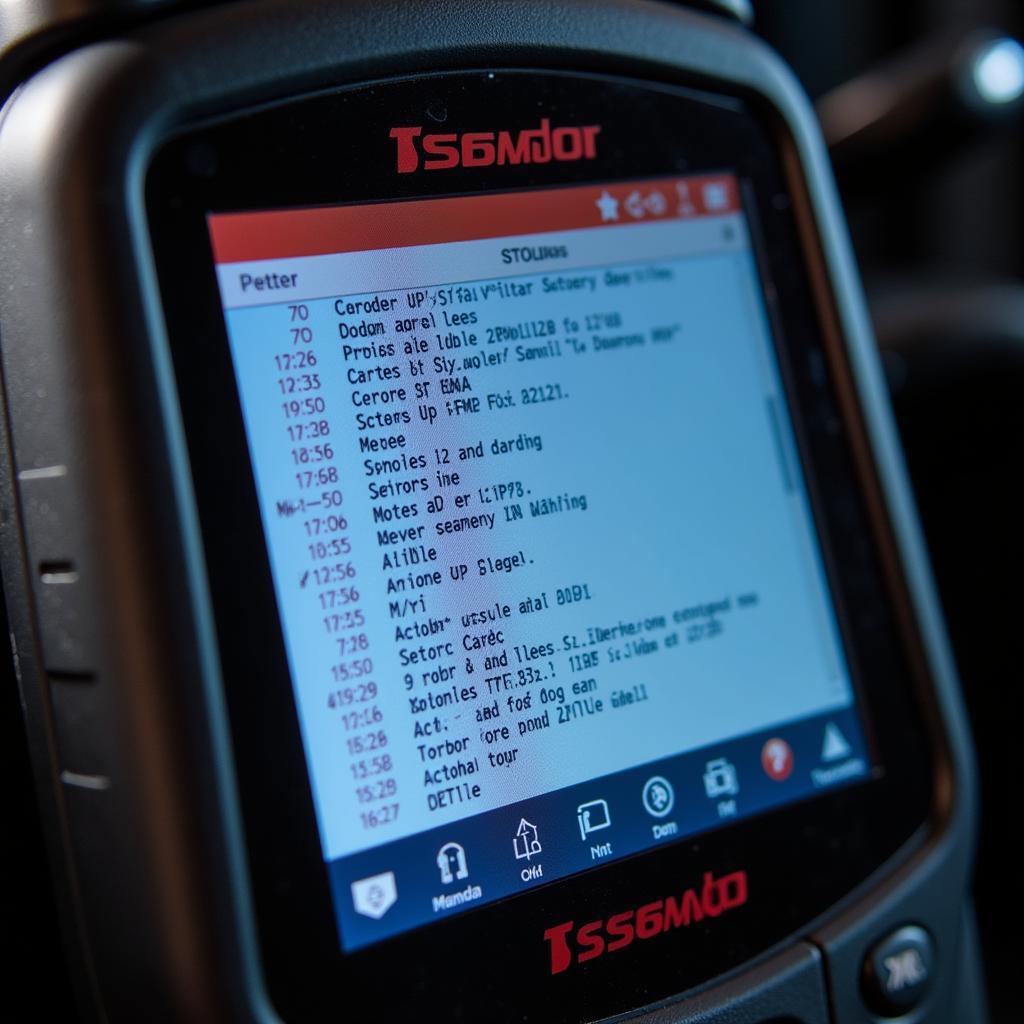 OBD-II scanner showing diagnostic codes
OBD-II scanner showing diagnostic codes
3. Professional-Grade Scan Tools:
These high-end scanners are typically used by mechanics and professional technicians. They offer advanced functionalities like bi-directional control (the ability to command certain car components), programming capabilities, and access to detailed technical information.
“Choosing the right scanner depends on your needs and technical expertise,” advises John Smith, Senior Automotive Engineer at ScanToolUS. “For most car owners, a reliable OBD-II scanner provides the perfect balance of functionality and affordability.”
How to Choose the Right Car Fault Diagnosis Scanner
With a plethora of options available, selecting the ideal car fault diagnosis scanner can feel overwhelming. Here are some key factors to consider:
- Compatibility: Ensure the scanner is compatible with your car’s make, model, and year.
- Features: Determine the features most important to you, such as code reading, live data streaming, or ABS/SRS system access.
- User Interface: Opt for a scanner with a clear, intuitive interface that’s easy to navigate.
- Budget: Set a realistic budget and explore scanners within your price range.
- Updates: Choose a scanner that offers regular software updates to ensure compatibility with the latest car models and technologies.
Getting the Most Out of Your Scanner
Owning a car fault diagnosis scanner is just the first step. To unlock its full potential, consider these tips:
- Familiarize Yourself with the Basics: Understand the different types of fault codes (e.g., P-codes for powertrain, B-codes for body, C-codes for chassis) and how to interpret them.
- Consult Reliable Resources: Utilize online databases, forums, and manufacturer websites to decipher code meanings and troubleshoot issues.
- Don’t Ignore the Obvious: While scanners are powerful tools, don’t overlook basic visual inspections and checks (e.g., fluid levels, tire pressure).
- Safety First: When working on your car, always disconnect the battery before connecting or disconnecting the scanner.
Conclusion
In an era of increasingly complex vehicles, a car fault diagnosis scanner has become an indispensable tool for car owners and professionals. By understanding the different types of scanners, their functionalities, and how to choose the right one for your needs, you can empower yourself to take control of your car maintenance, save money, and ensure a smoother, safer driving experience. For expert guidance and a wide selection of top-quality car fault diagnosis scanners, contact ScanToolUS today at +1 (641) 206-8880 or visit our office at 1615 S Laramie Ave, Cicero, IL 60804, USA.

